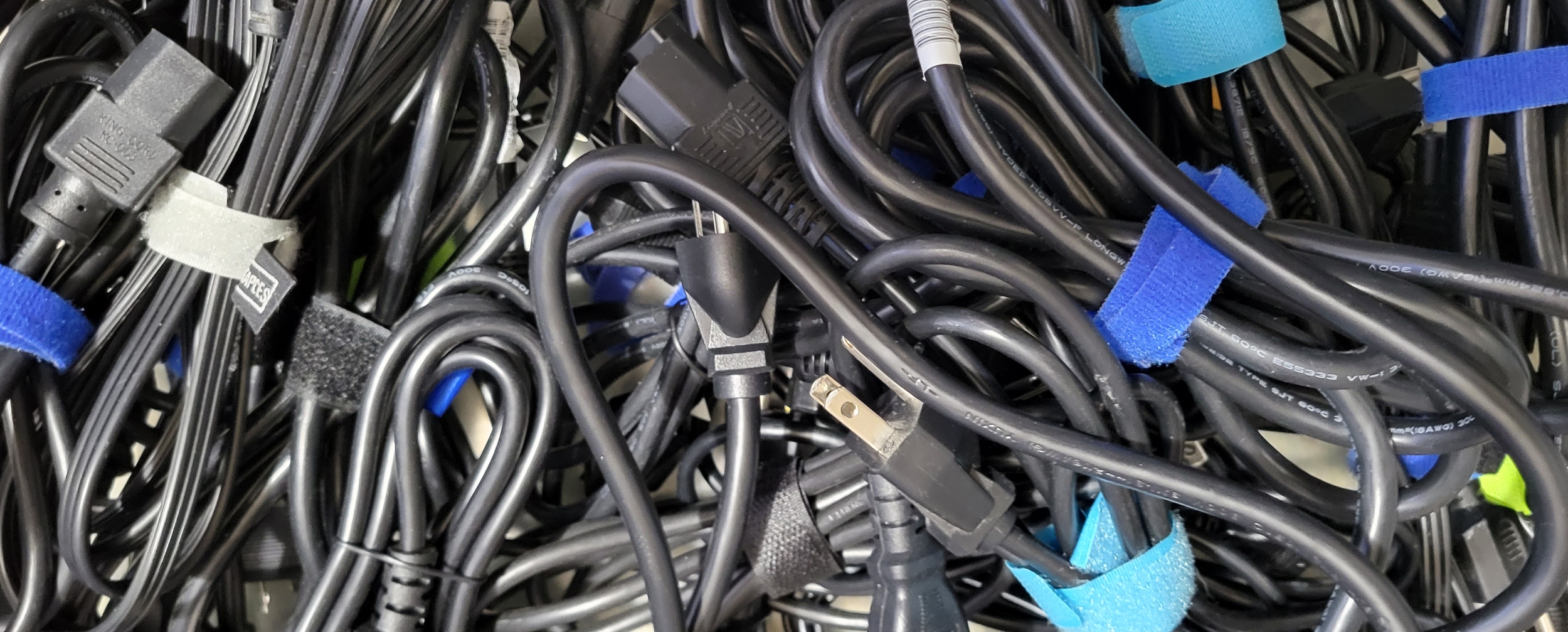
When Does a Power Cord Fail?
When it’s junk.
I have a self-imposed limit of 12 working computers in my house. Said limit being strongly suggested by my sweetie. It’s really not unreasonable so I work with it.
For years I’ve had an old Dell that I ran until it recently died. In order to maintain that limit of a dozen working computers, I had one CoolerMaster case with everything but a motherboard that sat for a few years. After the Dell died I purchased a new motherboard for that case and a CPU to go with it. I installed those new components along with some DDR4 memory that I had on hand, and tested it out on my ersatz workbench, installed Fedora 39 and tested a bit more.
The next step was to move the computer to its more permanent location and test it under maximum CPU loads. As usual, I left it accessible so I could make any last minute fixes that I might find. It’s a good thing I did. As I was moving the cables around preparatory to sliding the system into its final location, I noticed that the power cord was hot. Very hot. Much hotter than any power cable should be when a computer is in use. I’ve handled plenty of power cables that were connected to running computers and all were quite cool. It was hot enough all along its length that I was concerned that it might melt and catch fire.
I experimented for a couple hours to ensure that the problem was, in fact, the power cord. This involved using other power cords of various lengths, plugging them into the same outlet on the UPS as the hot cord, using the hot cord with other UPS systems and directly into the wall. The bad cord was always hot and none of the other power cords got even the slightest bit warm.
Fortunately I have lots of spare power cords on hand. Every computer, printer, and most monitors come with a standard power cord. The computers people have gifted me come with power cords. I have been known to purchase extra-long and extra-short power cords to meet the interesting needs of my lab.
After that testing, I replaced that power cord with a different one with the same exterior size which worked just fine. However, because the newly rebuilt computer draws much more power than it used to, I finally decided to use a power cord with 14 AWG1 copper conductors.
When I had everything running and the cord was not getting the slightest bit warm, I dissected the hot cord. I cut both the plug and receptacle ends off and then stripped the wires. The wires in this cord were no larger than 20 AWG which is quite small. Way too small for a modern computer. Unfortunately, I have no way of knowing where I acquired that specific cord. If I did, I would have had a few words with the manufacturer. They were obviously cutting corners on a standard computer power cord.
As a result I checked all of my other power cords – at least the ones in use – and they were all fine. I suggest that you check the power cords on your equipment and replace any that are even a bit warm. They should be cool to the touch along their entire length. If they aren’t, replace them with cords that are at least 18 AWG or even larger, 14 AWG.
Unfortunately I know of no way to test power cables without some expensive test equipment.
- AWG – American Wire Gauge defines electrical cable wire sizes. Smaller numbers mean a larger wire cross section which can carry more current. See also WikiPedia, https://en.wikipedia.org/wiki/American_wire_gauge ↩︎